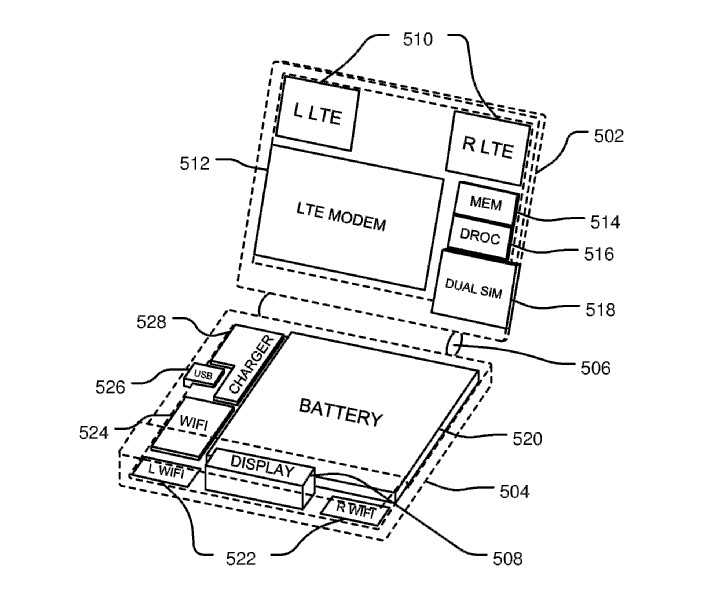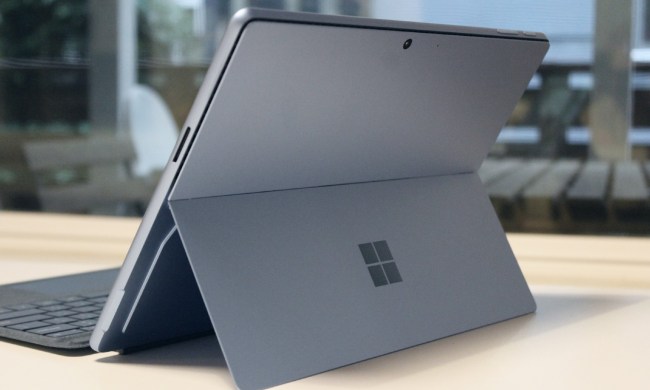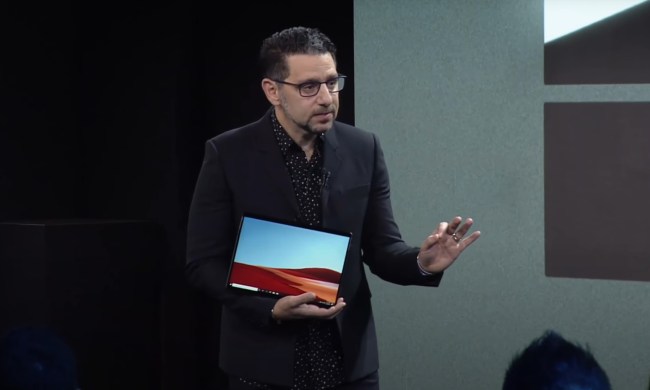
The patent describes a “folding wireless communications device” that lends LTE capabilities to another device while occupying a small, lightweight form factor, according to a report from Pocket Now. It is said to measure 90 mm by 57 mm, which would make it easy to stow in a pocket or throw in a bag.
Many modern laptops have built-in LTE support, but older models rarely offer this kind of functionality. Having a separate accessory to bridge the gap would allow users to gain reliable internet access wherever they are without having to invest in a brand new system.

Given that there has been so much hype about the possibility of a Surface Phone, some observers believe that this patent might be evidence that Microsoft is considering a clamshell design for the as-yet-unannounced device. For instance, the design was assumed to be related to the smartphone project in a report from MSPoweruser.
However, the small display pictured in the drawings submitted by Microsoft seems to suggest that this is some kind of hotspot, rather than a smartphone. The accompanying description states that the screen would be used to communicate battery status, signal strength, the name of the current carrier, or the current network throughput, all of which point to a modem accessory rather than a Surface Phone.
Of course, the fact that this patent sent tongues wagging over the prospect of the Surface Phone demonstrates just how much interest there is in that project. Even though various iterations of the Windows Phone never really set the world alight, the Surface brand is so strong that there is a lot of curiosity about how it might carry over to the smartphone arena.
There is no word on what the current status of this hotspot hardware might be. The patent was submitted in January 2016, but was only made public in July.


